Pests and Their Nests
Pests and Their Nests
There are a fair number of pests that are hitchhikers or constantly travel from place to place, but there are also a lot of pests that build nests/homes. In today’s blog, we look at these homebound pests and their nests.
Ants
Most species of ants construct intricate nests with mounds of dirt (or other materials) marking the entrance. The contents that make up an ant hill depend on what is available within the geographic location of the colony. Typically, they are made up of a combination of soil, sand, clay, and other small pieces of debris that are readily available. The interiors of the nests are subterranean and consist of a series of complex, interlaced tunnels with various chambers providing larger open areas inside the nest. These chambers have a variety of uses including storage areas for food, nurseries for ant larvae and their caretakers, and even areas for ants to simply rest. The exact design of both the interior and exterior of an ant hill depends on the species of ant that has constructed the hill. For example, some species will create small little hills that lead down into their maze of tunnels, while others will construct tall, resolute towers of soil and clay – somewhat resembling a mini volcano in shape. 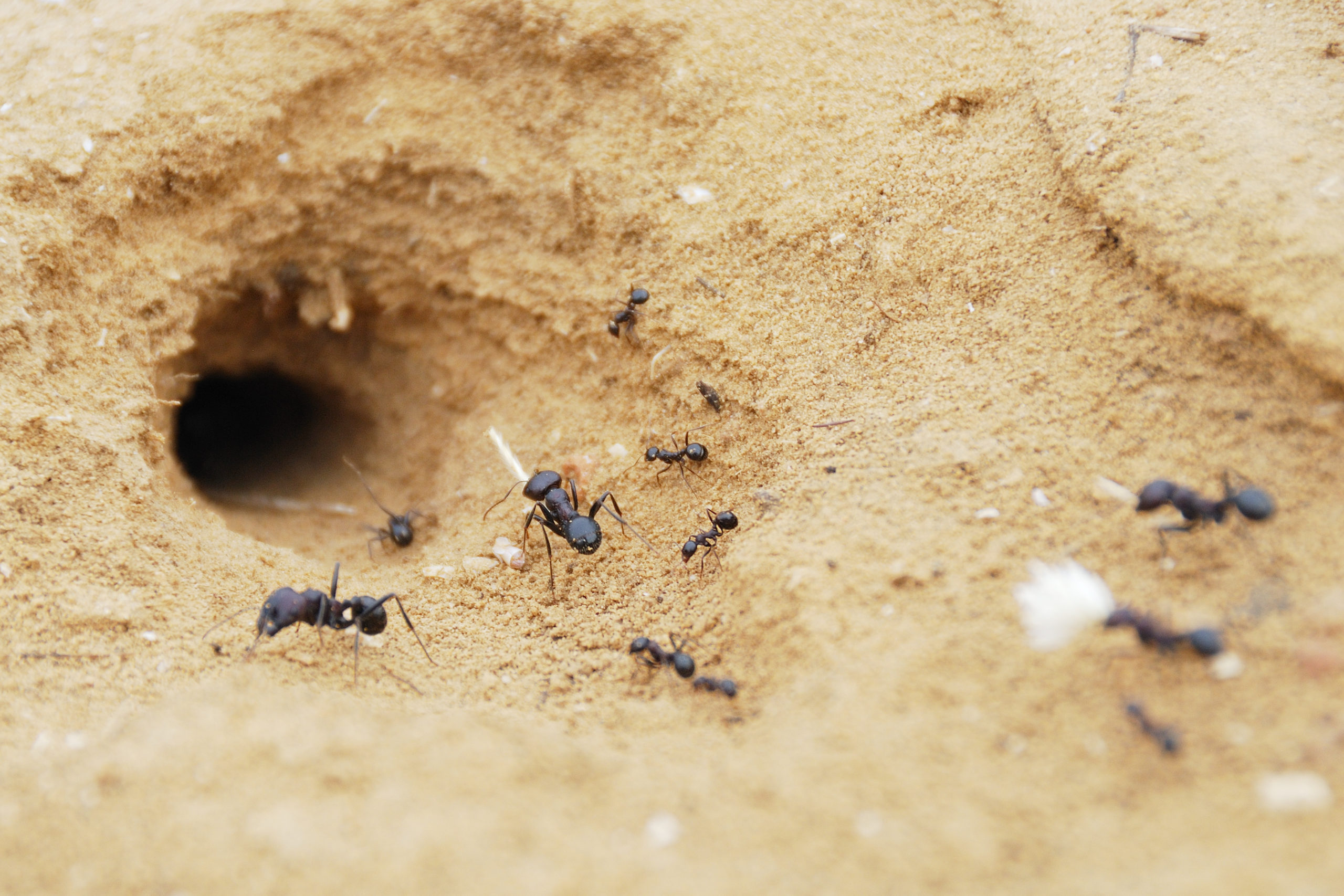
Carpenter Bees
Unlike most species of bees, carpenter bees are not social creatures and will form nests as an individual instead of in groups. Female carpenter bees bore into wooden structures, creating a series of tunnels that act as her home and nesting area. The entry point is typically a hole spanning roughly half an inch in diameter which stretches back several inches before partitioning off into different tunnels and chambers along the wood grain. These different galleries can run from roughly six inches long to even longer than a foot. Occasionally different bees will share an entrance into a wooden structure, but branch off to their own chambers, living separate from one another as opposed to operating as a colony. 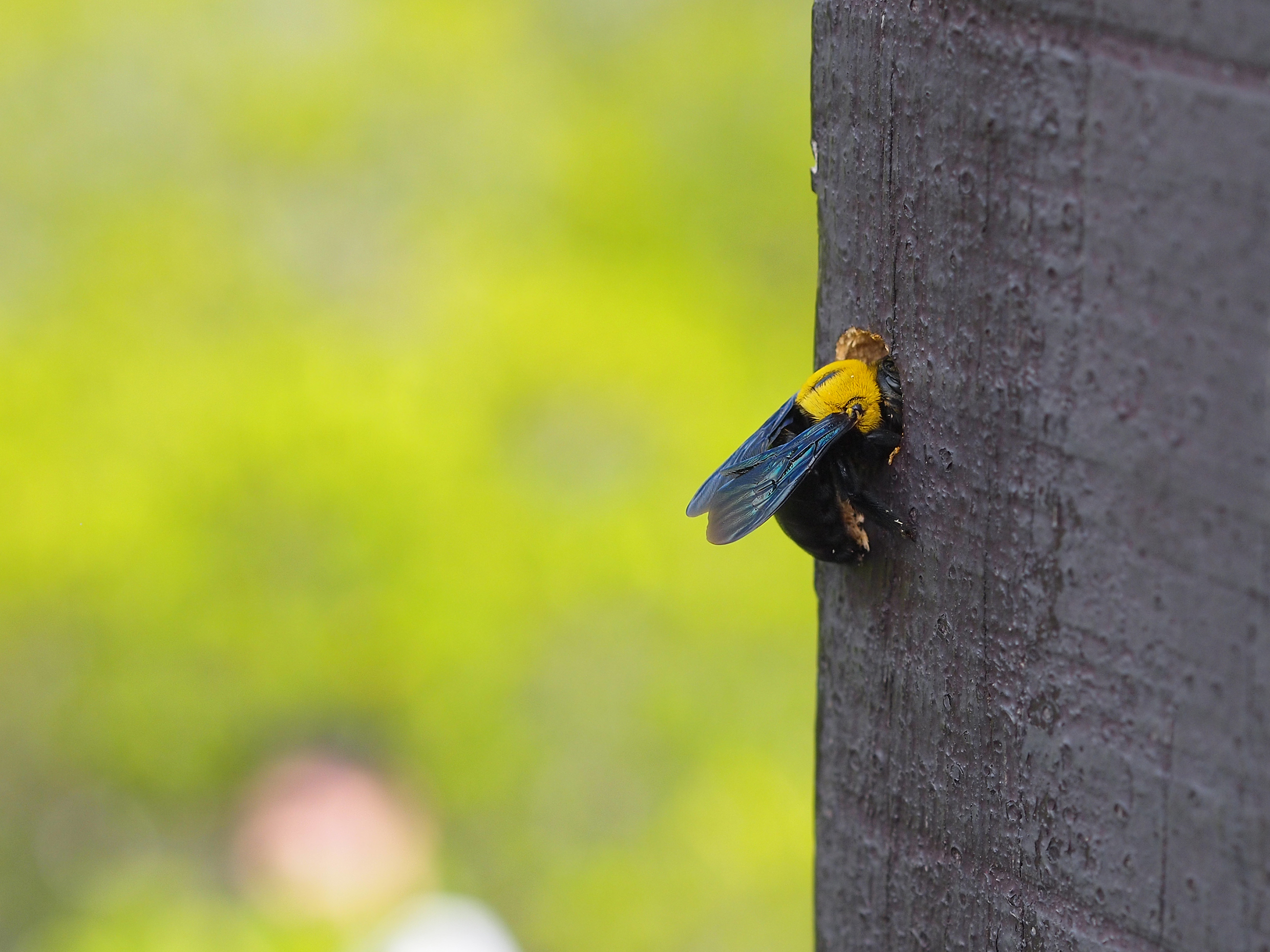
Hornets
Hornets construct their nests with a paper-like material made from a mix of their saliva and chewed bites of wood. They tend to make their nests on large trees or along the siding of a home. These nests are notably large, often the size of a basketball, and are shaped like oblong paper lanterns. The outer walls of the nest appear smooth and overlap one another with openings at various heights along these structures, creating cavernous entrances into the nest. 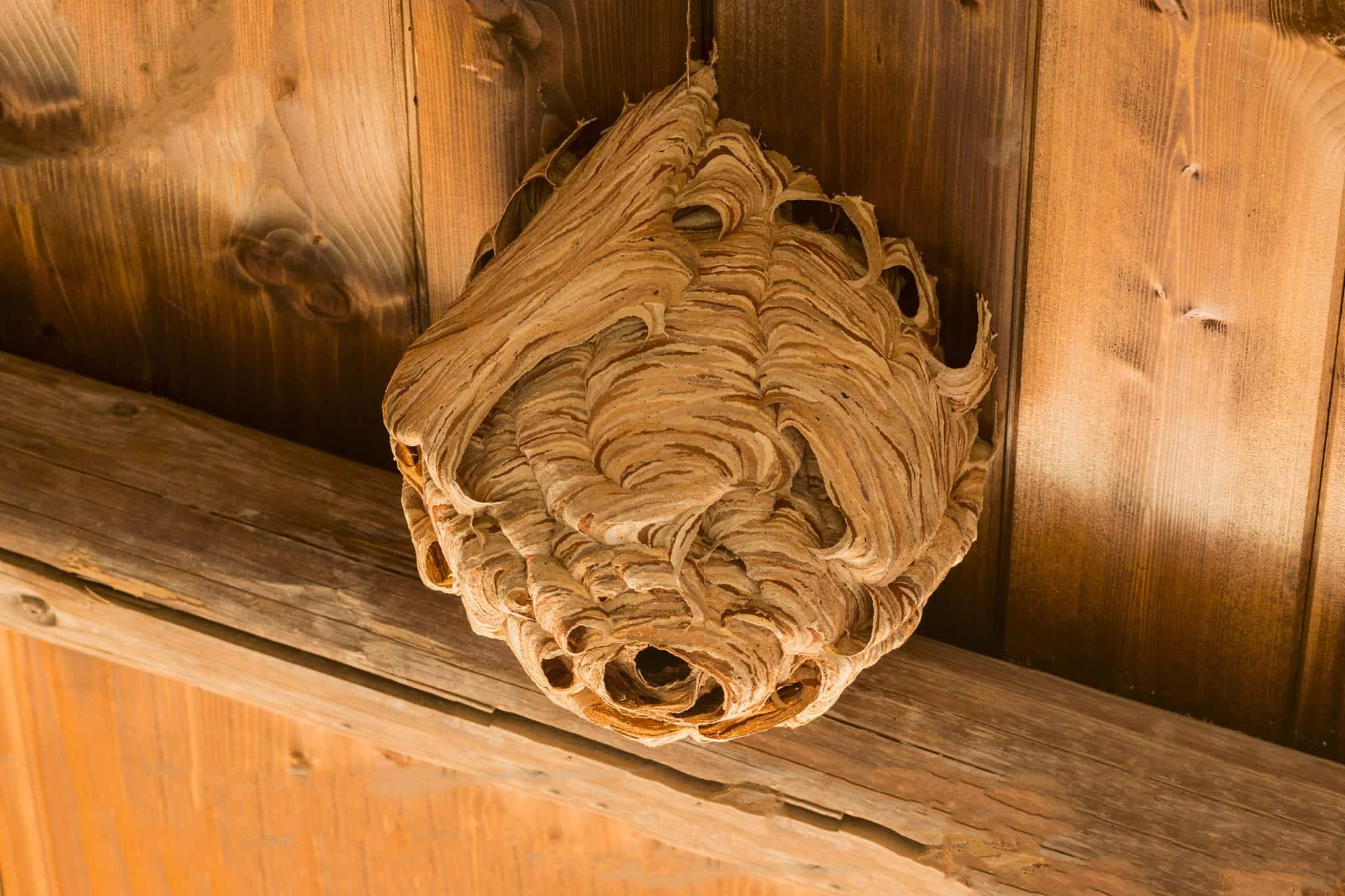
Paper Wasps
The nests of paper wasps can appear more simplistic compared to the very intricate nests of other wasps and bees. Wasps can construct their nests in a variety of locations but can often be found under any overhanging structures such as porch coverings or the eaves of homes. The nests are shaped like umbrellas with hexagonal cells opening downward and are often fairly small in size, ranging between the size of a golf ball to the size of a small frisbee on average.
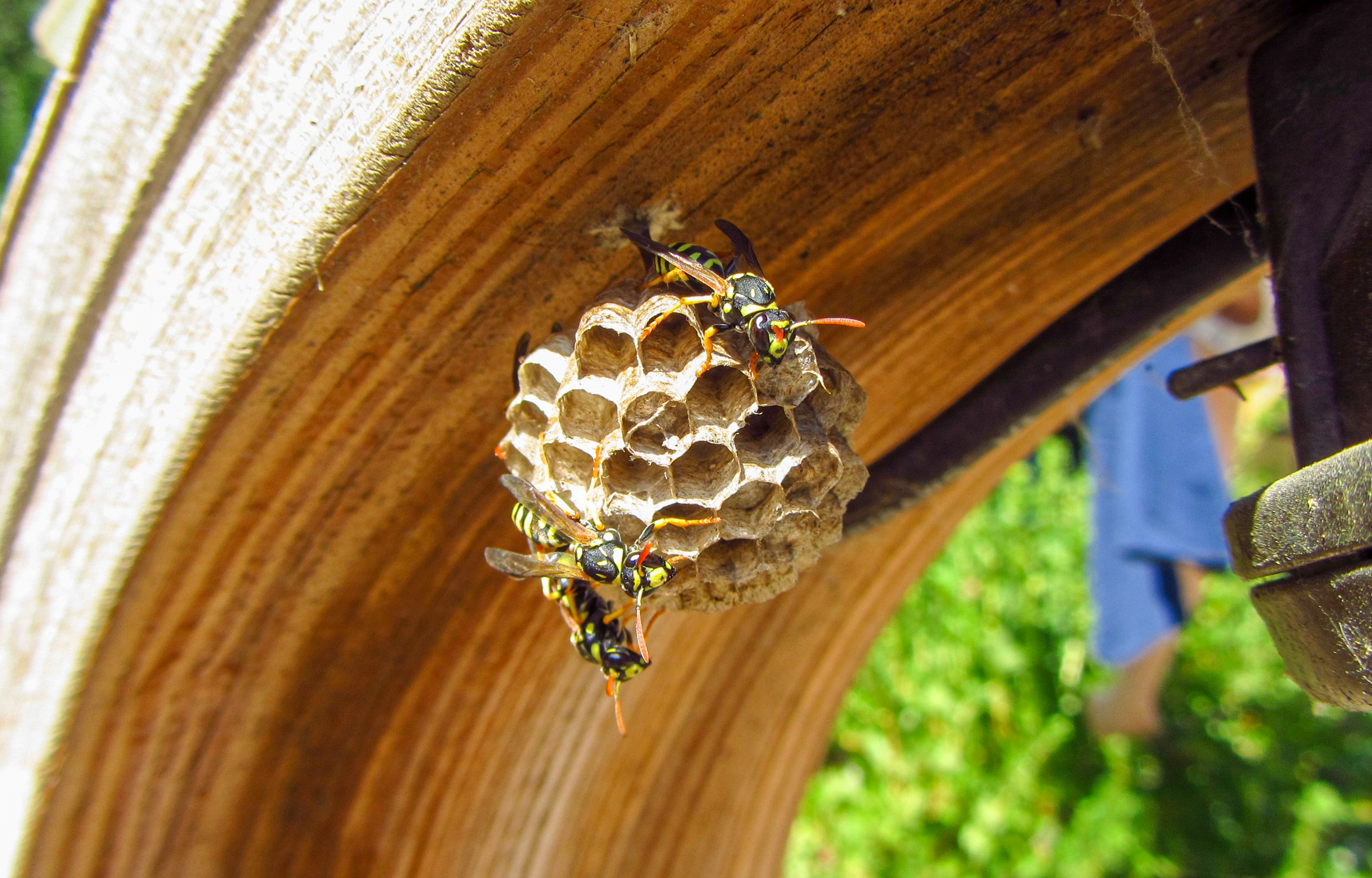
Spiders
Some spiders are vagrants and active hunters that do not spin webs, but those that do creature very impressive structures. These webs are made of spider silk which is lighter than cotton and thinner than human hair, yet miraculously strong and durable. It is produced within a set of special glands in spiders and is comprised of a series of proteins known as spidroins. Some spider species can produce various kinds of silk using different silk-making glands, which is why you may see a variance in the strength and elasticity of different strands in webs. Spiders have evolved to use their webbing in a variety of ways, from intricate nests to a method for capturing prey and, in some cases, they are even used in the mating rituals of some species. 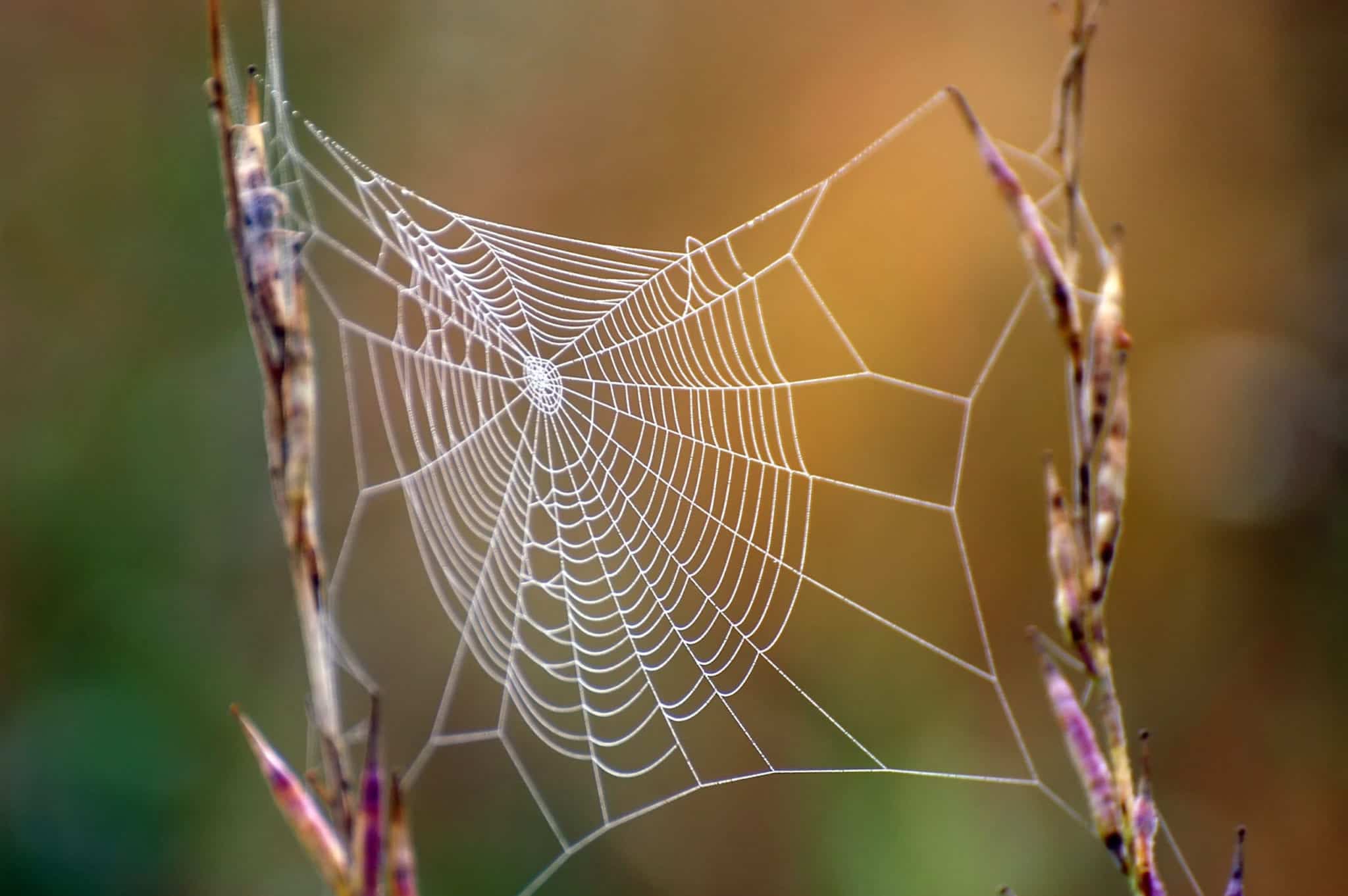
Termites
Similar to ants, termites live in colonies of hundreds to several hundred thousand and make intricate tunnels and mounds as their nest. Postdoctorial animal/insect behavior researcher, Nobuaki Misumoto Ph. D. spent extensive time studying the intricate constructions of termites. Dr. Mizumoto observed and cataloged the building movements of termites. In his findings, Dr. Mizumoto reported that different species construct their nests in different fashions. For some species, a worker termite burrows into the earth or wood, collects the debris itself, and deposits the waste outside of the colony. This process is known as the “individual transportation” method. However, other termites, construct their nests in a fashion that resembles an assembly line. One termite carves the tunnel and, when there is enough debris, the termite will kick the pile of debris backwards to send it to the termite behind it. Once the second termite receives the load, it will repeat the same process to the termite behind it, and so forth. Dr. Misumoto describes the process as “a kind of bucket-brigade behavior.” Some termite mounds have become very advanced and impressive structures in which termites have even managed to construct a fully functioning series of caverns acting as an internal ventilation system for the colony. Some species even act as mini farmers, actively growing fungus in their home as a food source. 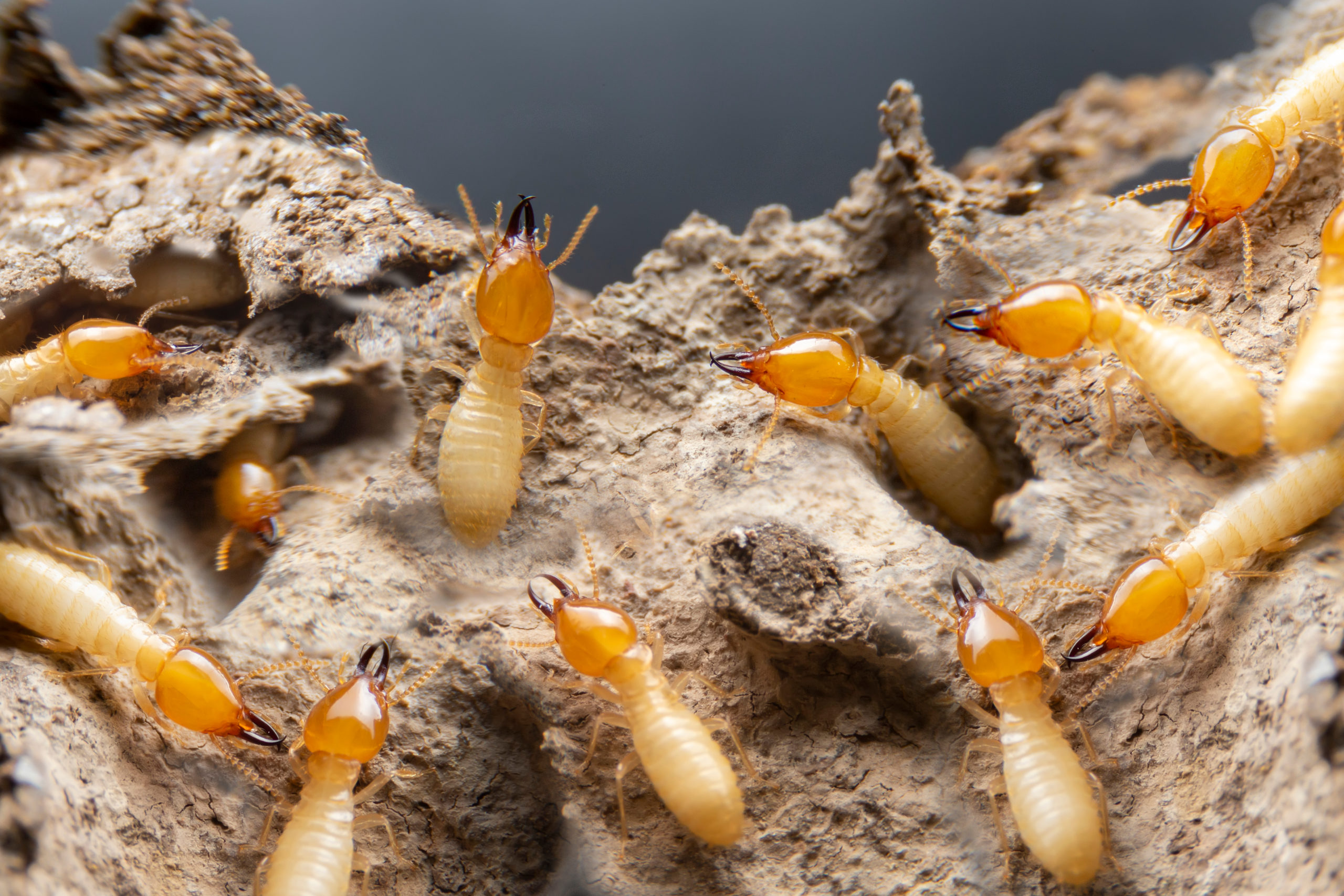
Yellowjackets
Yellowjackets create hidden nests. This can be in the form of a burrow underground, or in the cracks and crevices of buildings such as our homes. They build their hives within these other structures and can often be seen darting into the ground or into cracks on walls. 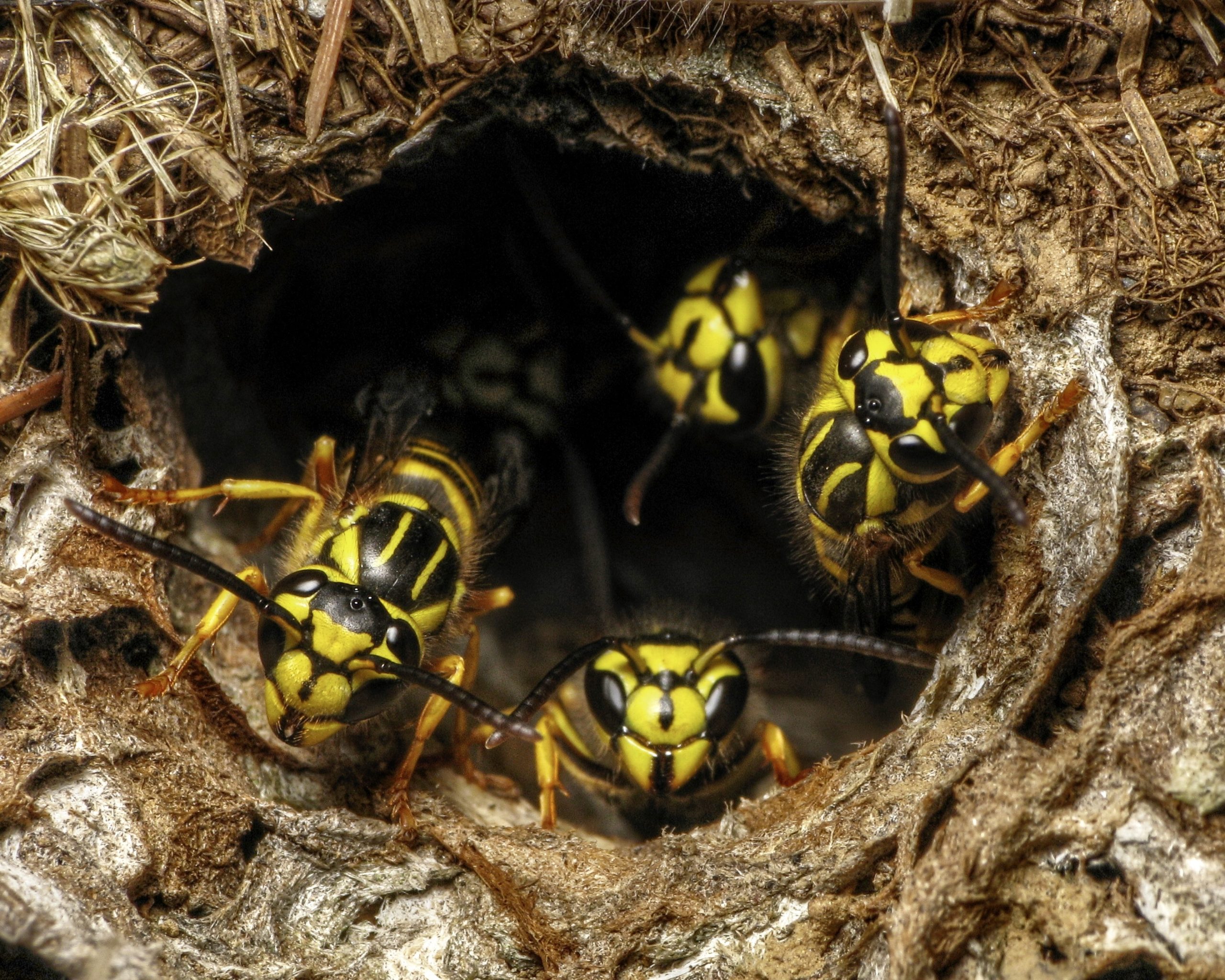
Citations
The 3 Coolest Things Built by Bugs (2013) YouTube. SciShow. Available at: https://www.youtube.com/watch?v=I8fLnDbWkg&list=PLB3FCEEAC84884760&index=78 (Accessed: June 2020).
Ant Hills (no date) Antkeepers. Available at: https://www.antkeepers.com/facts/ant-colony/ant-hill/ (Accessed: October 2020).
Bees and Wasps (no date) Illinois Department of Public Health. Available at: https://www.dph.illinois.gov/topics-services/environmental-health-protection/structural-pest-control/bees-wasps (Accessed: May 21, 2021).
Bittel, J. (2021) Spiderwebs and Spider Silk, Explained, National Geographic. Available at: https://www.nationalgeographic.com/animals/article/spiderwebs-explained (Accessed: March 22, 2021).
Bradford, A. (2017) Facts About Bumblebees, Live Science. Available at: https://www.livescience.com/57509-bumblebee-facts.html (Accessed: August 2020).
Buchman, S. (no date) Carpenter Bees (Xylocopa spp.), U.S. Forest Service. The United States Department of Agriculture. Available at: https://www.fs.fed.us/wildflowers/pollinators/pollinator-of-the-month/carpenter_bees.shtml (Accessed: January 26, 2021).
Carpenter Bees (2014) University of California Agriculture and Natural Resources. Integrated Pest Management Program. Available at: http://ipm.ucanr.edu/PMG/PESTNOTES/pn7417.html (Accessed: January 26, 2021).
Hornets (no date) National Geographic. Available at: https://www.nationalgeographic.com/animals/invertebrates/facts/hornets (Accessed: March 19, 2021).
Hornets: Facts About Hornets (no date) The RSPB. Available at: https://www.rspb.org.uk/birds-and-wildlife/wildlife-guides/other-garden-wildlife/insects-and-other-invertebrates/bees-wasps-ants/hornet/ (Accessed: March 19, 2021).
Jacobs, S. (2017) Carpenter Bees, Penn State Extension. Pennsylvania State University College of Agricultural Sciences. Available at: https://extension.psu.edu/carpenter-bees (Accessed: January 26, 2021).
Lewis, D. (no date) Perserving and displaying a hornet’s nest, Iowa State University Extension . Available at: https://www.extension.iastate.edu/news/2006/oct/070901.htm (Accessed: July 28, 2021).
Mertz, L. (2020) Digging Deep: The Secrets Within Termite Nests, Entomology Today. Available at: https://entomologytoday.org/2020/08/19/digging-deep-secrets-within-termite-nests/ (Accessed: September 2020).
Ricciuti, E. (2019) Yellowjackets: A Look at Opportunistic Raiders of Honey Bee Hives, Entomology Today. The Entomological Society of America. Available at: https://entomologytoday.org/2019/03/28/yellowjackets-opportunistic-raiders-honey-bee-hives/ (Accessed: October 2020).
Sanders, A. (2018) How Does an Ant Build Its Hill?, Sciencing. Available at: https://sciencing.com/ant-build-its-hill-4587980.html (Accessed: October 2020).
Waldvogel, M. and Alder, P. (2018) Carpenter Bees, NC State Extension Publications. North Carolina State University Department of Entomology and Plant Pathology. Available at: https://content.ces.ncsu.edu/carpenter-bees (Accessed: January 26, 2021).
Request a Free Quote Today
(We do not share your data with anybody, and only use it for its intended purpose)


